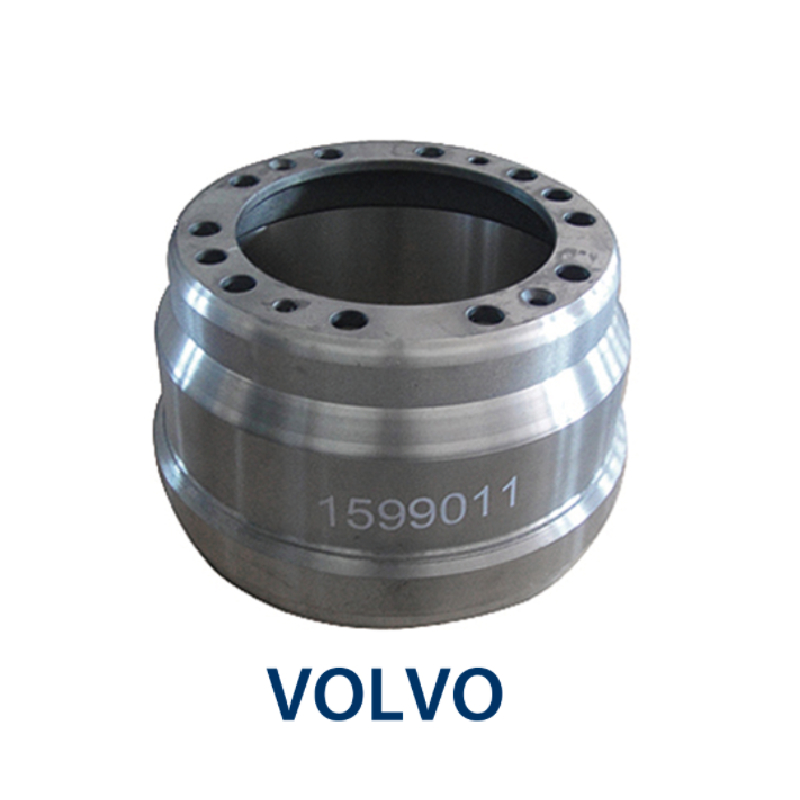Oct . 19, 2024 12:00 Back to list
stud pilot brake drum
Understanding the Design and Function of Stud Pilot Brake Drums
In the world of commercial vehicles, such as trucks and buses, the brake system is critical for safety and efficiency. One integral component of this system is the brake drum, specifically the stud pilot brake drum. This article delves into the design, function, and importance of the stud pilot brake drum in ensuring optimal braking performance.
What is a Stud Pilot Brake Drum?
A stud pilot brake drum is a type of component used in drum brake systems. Unlike a hub-centric brake drum, which centers itself on the wheel hub, a stud pilot brake drum attaches to the wheel using the studs, offering a distinct advantage in terms of installation and alignment. The term “stud pilot” refers to the method by which the drum is mounted and secured to the wheel's hub via lug nuts threaded onto the wheel studs.
Design Features
Stud pilot brake drums are typically made of cast iron or steel, materials chosen for their strength, heat resistance, and durability under heavy usage. The design features usually include
1. Size and Dimensions These drums come in various sizes to accommodate different vehicle types and axle configurations. Larger drums can handle more heat dissipation, which is crucial for vehicles that experience considerable braking forces.
2. Inner and Outer Surfaces The inner surface of the drum interacts with brake shoes to create friction and slow down the vehicle. A smooth interior surface ensures efficient braking while minimizing wear on the brake shoes.
3. Cooling Vents Some designs incorporate venting systems to allow air to circulate and cool the drum during braking, thereby preventing overheating and brake fade.
4. Mounting Flange The flange is designed for easy attachment to the wheel hub, ensuring that the drum is perfectly aligned for optimal performance. This feature is pivotal for the longevity and effectiveness of the braking system.
Functionality
stud pilot brake drum

The primary function of the stud pilot brake drum is to work together with the brake shoes to create stopping power. When the brake pedal is engaged, hydraulic pressure is applied to the brake shoes, forcing them against the inner surface of the drum. The friction generated between the shoes and the drum slows the vehicle down.
In essence, the stud pilot brake drum serves as a vital component that converts hydraulic energy into mechanical energy, ultimately resulting in the deceleration of the vehicle. Furthermore, the stud pilot design allows for easier mechanical adjustments and replacements, which can be critical for fleet maintenance.
Importance in Heavy-Duty Applications
In heavy-duty applications, the stud pilot brake drum plays an especially crucial role due to the heavy loads these vehicles carry and the frequent stopping they experience. The durability and performance of these drums can significantly influence the overall safety and efficiency of a fleet.
High-quality stud pilot brake drums reduce the likelihood of brake failure, ensuring that trucks and buses can operate safely even under challenging conditions. Additionally, consistent performance reduces downtime, which is a critical factor in the logistics and transportation industries.
Maintenance Considerations
Maintaining stud pilot brake drums is essential for ensuring long-term reliability and performance. Regular inspections should include checking for signs of wear, such as scoring on the interior surface and excessive heat discoloration. It's important to replace brake drums as needed, as continued use of worn-out parts can lead to reduced braking ability and increased wear on other brake system components.
Proper installation is also key to performance. The drums should be mounted according to the manufacturer's specifications, with the correct torque applied to the lug nuts, ensuring that the drum is secure and properly aligned.
Conclusion
In conclusion, stud pilot brake drums are a fundamental part of the braking system in many heavy-duty vehicles. Their unique design and functionality ensure effective braking performance, vital for safety in transportation. Understanding their role and maintaining them properly can help guarantee the reliability and longevity of the vehicle's braking system, ultimately contributing to safer roads and efficient transport operations. As technology evolves, ongoing advancements in brake drum design and materials will likely continue to enhance performance and safety in the automotive industry.
-
Liza Brake Drum: Superior Quality & Performance for Safe Driving
NewsAug.24,2025
-
Iveco Brake Drum | Premium OE Quality for Daily & Eurocargo
NewsAug.22,2025
-
Your Brake Drum Man: Quality & Performance Parts
NewsAug.21,2025
-
Explore Japan: Ultimate Travel Guide & Authentic Experiences
NewsAug.19,2025
-
Your Brake Drum Man: Premium & Reliable Brake Drums for Sale
NewsAug.18,2025
-
ROR Web Development: Build Fast, Scalable, Secure Apps
NewsAug.17,2025
